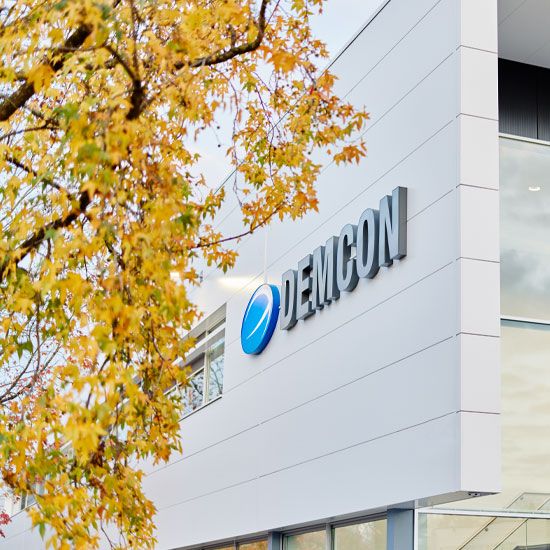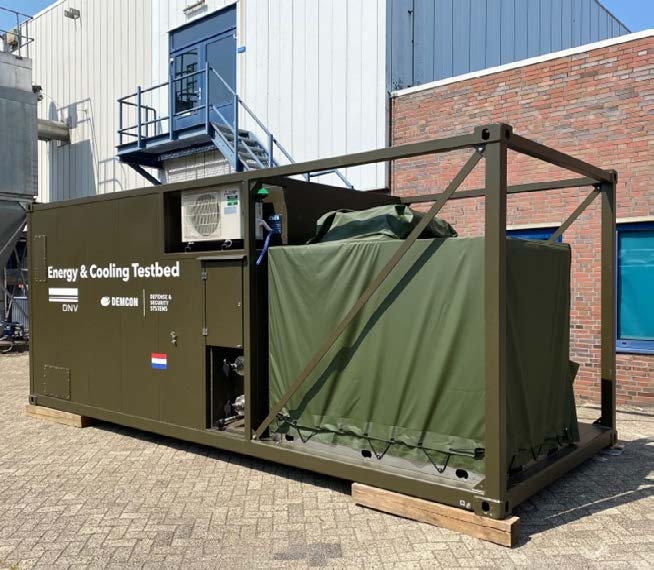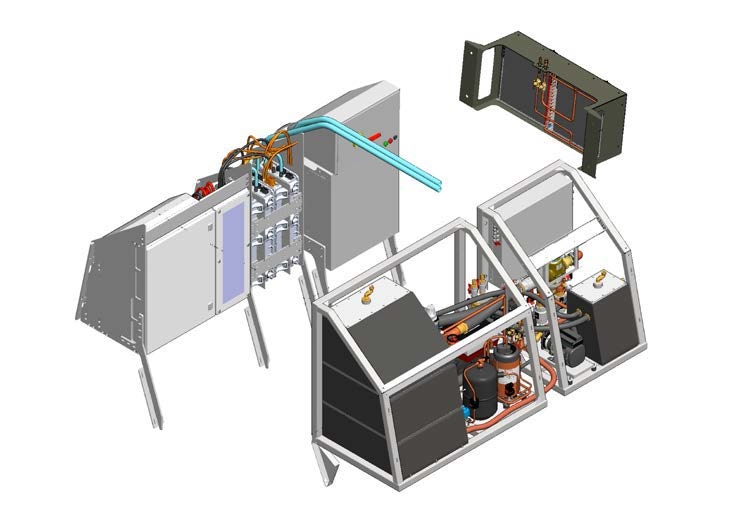
Defense is acquiring more and more electric operations and communication systems. This makes supplying power for missions in the field a challenge.

New technological developments (like innovative sensors and effectors) for application in systems for defense are getting more and more advanced and move towards higher electrical power usage. Because of demanding constraints (like small integration volume, mobility and extreme operational conditions) these developments also require active cooling power. The new technological developments always require a fitting Energy & Cooling solution to be able to be used in the intended operational context. Since its foundation Demcon defense & security systems has defined development and integration of Energy & Cooling solutions as one of its main competence fields to add value for defense in the role of technology developer and integrator.
In the past years Demcon defense & security systems gained experience with designing, integrating and testing of high-power energy solutions within the context of the bi-national Jupiter program. This resulted in a for development required 20-foot container based E&C testbed and a in a Boxer vehicle integrated E&C system taking care of the demanding power and cooling supply of a high power HEL effector system.
Testbed capabilities
.jpg)
Integration challenges and characteristics

Electrification is the name of the game in the military world. Personnel, vehicles and installations are increasingly equipped with electric devices and systems for operational tasks and communications. As a result, electric power supply and cooling needs are increasing. This is especially true for advanced systems such as lasers that require a high-capacity energy supply within a small footprint. To develop the required energy and cooling systems, we combine our systems engineering skills with specialized thermal and electrical disciplines and extensive production capabilities.

We have the required mechanical, thermal and electrical power expertise, and in-depth knowledge of the various processes. This is demonstrated by our thermal management track record in high-tech, aerospace and logistics applications. For example, we have specialized in lumped-element modeling to understand and predict the operation of complete energy and cooling solutions. In addition, our in-house experts on computational fluid dynamics and finite-element modeling can make detailed energy-flow simulations. Next to this we have built a network of key subsystem and component partners and suppliers. This enables us to develop reliable systems for operations in the military arena.

Defense is acquiring more and more electric operations and communication systems. This makes supplying power for missions in the field a challenge.
Unmanned system technologies can help defense organizations increase the effectiveness and safety of operations and people.
Next generation data communication using laser signals between ground stations, satellites, ground vehicles and aircraft, for example, will be at the terabit per second level.
No matter how much high-tech is wielded, the success of defense operations largely depends on the military personnel in the field.
Modern technology can help defense organizations increase the effectiveness and safety of missions. This includes smart systems, artificial intelligence and realistic simulations.
Being prepared is half the victory. Obviously, this also applies to defense operations.